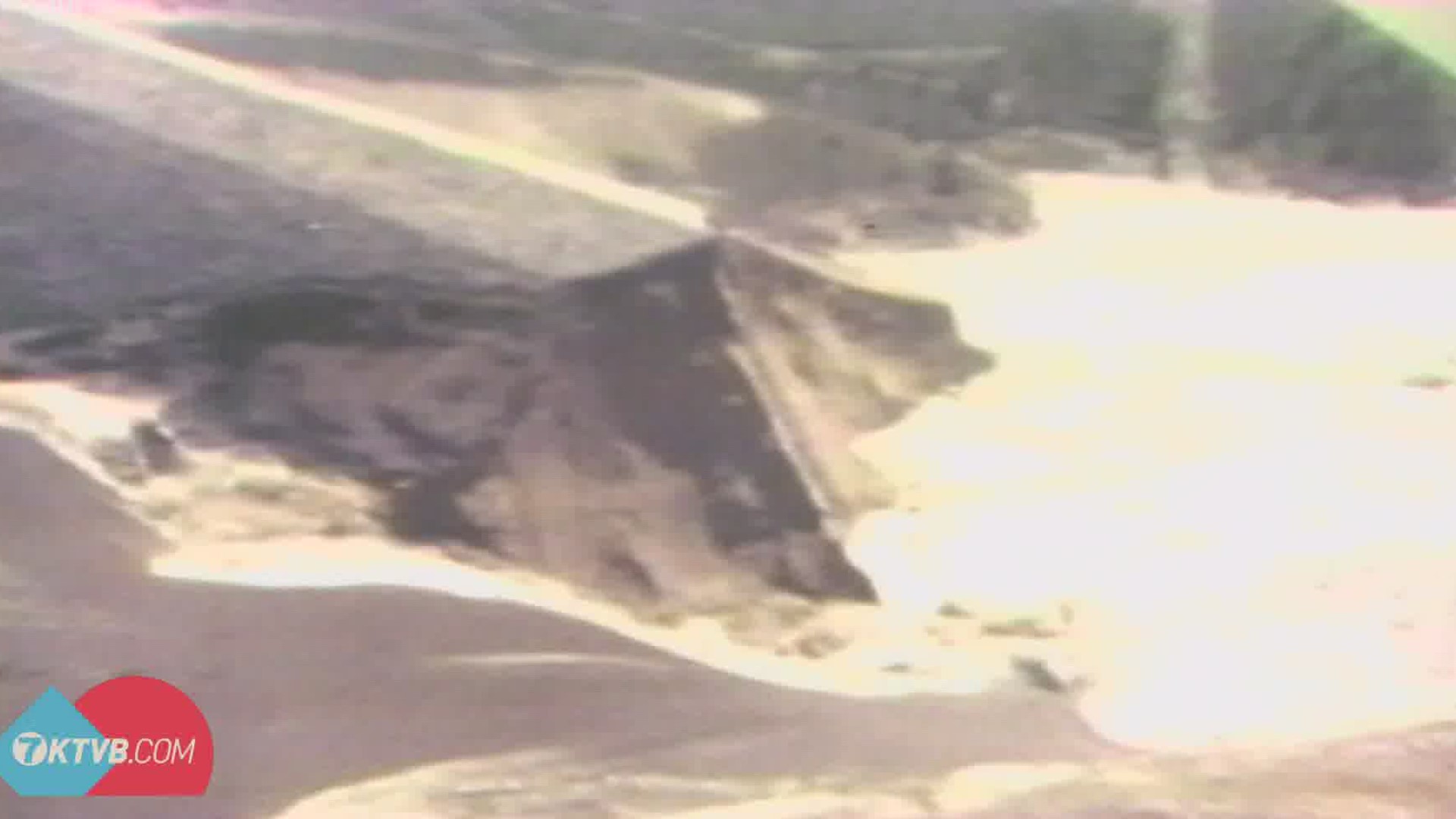BOISE, Idaho — Living in the West, Idaho is no stranger to natural disasters.
We've lived through floods, wildfires and "snowmageddon" -- all things Mother Nature threw at us, some with little to no warning.
But June 5, 1976, was different.
Saturday marks the anniversary of the Teton Dam collapse. Not a natural disaster but a manmade one. And a tragic one.
We continue to remember -- 45 years later.
It took almost four years to build...
"The water that cascaded down through there was unbelievable."
And mere hours to collapse.
"About 300 feet of water in depth at that time, more than 300 feet, and it began to come through. I think at first it came through a 60-foot wall more than 100 feet, and then finally the whole dam on the north side gave way. And it's a scene that just took your breath and you wondered, what's gonna happen downstream?" said one witness.
What happened downstream was a wall of water, leaving the collapsed Teton Dam at a million cubic feet per second, hitting some places at least 30 feet high.
By 8 p.m., the flow of water had nearly stabilized, but not before essentially destroying the communities of Rexburg and Sugar City.
In the end, 11 people were killed, along with scores of livestock.
It caused more than $400 million in property damage.
Damages and death that could have been prevented.
From 1972 to 1975, crews built the earthen dam, 12 miles northeast of Rexburg in eastern Idaho.
At 305 feet high, the reservoir it would create was supposed to provide flood control, hydropower, and supplemental irrigation water for over 111,000 acres of farmland in the Upper Snake River Valley.
Finally finished, they began to fill it a foot at a time in the fall of 1975.
The following spring runoff doubled that rate, eventually rising four feet a day.
By early June, inspection crews found a couple of weak spots in the dam where water was seeping through.
As the water kept rising behind it, those spots were considered minor until 11:52 a.m. on June 5th.
"I put my son and my daughter in the car, they were 8 and 10, and we drove to Rexburg. We had 20 minutes warning, and my daughter looked in the rearview mirror and she said 'mother, look out the rearview mirror. You can see the water going across the road,'" Brenda Curtis said.
The collapse flooded 300 square miles.
Homes and cars were carried away by the floodwaters, leaving two-thirds of Rexburg residents homeless.
The water took three days to reach American Falls - 70 miles away. That’s where it stopped because of another dam already in place.
Investigators later determined that the collapse was due to a series of design and construction flaws.
Today the spillway and the unmoved mound of dirt remain - a reminder of water's power and the tragic events of 45 years ago.
After that day, the U.S. Bureau of Reclamation instituted the "dam safety" program, which is now used as a worldwide standard for every new dam built.
45 years later, the remnants of the dam are still visible. There has been no attempt to rebuild it.
Join 'The 208' conversation:
- Text us at (208) 321-5614
- E-mail us at the208@ktvb.com
- Join our The 208 Facebook group: https://www.facebook.com/groups/the208KTVB/
- Follow us on Twitter: @the208KTVB or tweet #the208 and #SoIdaho
- Follow us on Instagram: @the208KTVB
- Bookmark our landing page: /the-208
- And we also turn each episode into a podcast on Podbean
- Still reading this list? We're on YouTube, too:

